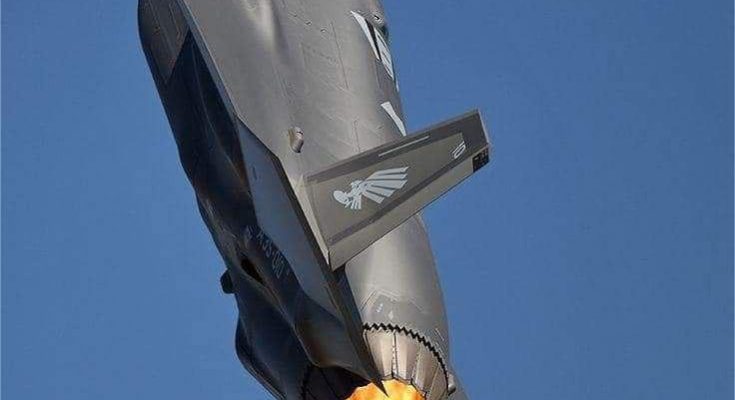The F-35B Lightning II, a fifth-generation stealth fighter jet, has quickly become one of the most advanced and versatile aircraft in the world. When paired with the U.S. Navy’s newest “Lightning Carriers”—the amphibious assault ships equipped to operate these cutting-edge fighters—the result is a breathtaking demonstration of air and naval power. The combination of the F-35B’s capabilities and the mobility of these state-of-the-art carriers brings an entirely new dimension to modern warfare, enabling rapid, flexible deployment of combat power anywhere on the globe.
The F-35B is unique among the F-35 family due to its short takeoff and vertical landing (STOVL) capability. This allows the fighter to take off and land in confined spaces, such as the flight decks of amphibious assault ships. Unlike traditional carriers that require long runways, the “Lightning Carriers”—such as the USS America or the USS Wasp—can deploy the F-35B from their relatively small decks, which provides unmatched flexibility in terms of positioning and operations. Whether it’s operating in the middle of the ocean or from a forward-deployed base, the F-35B provides unparalleled power projection and versatility.
The F-35B’s takeoff and landing aboard these carriers are nothing short of spectacular. On takeoff, the fighter can launch quickly from the short deck, using a combination of jet thrust and lift fan propulsion. As the engines roar to life, the F-35B lifts off almost effortlessly, accelerating rapidly to supersonic speeds. The fighter’s impressive maneuverability and ability to remain invisible to radar—thanks to its advanced stealth design—ensure that it can operate effectively even in heavily contested airspaces. When returning to the carrier, the F-35B lands vertically, hovering just above the deck before settling down with precision. The sight of the F-35B gently touching down on the ship’s flight deck, often in rough seas or under combat conditions, highlights its incredible versatility and the engineering that goes into making it one of the most advanced fighters ever built.
When in action, the F-35B is capable of performing a wide range of missions, from air-to-air combat to close air support, intelligence gathering, and even air-to-ground strikes. Its integrated sensors and advanced avionics allow the pilot to detect and track enemy aircraft and ground targets with exceptional accuracy. The fighter is equipped with an advanced radar system that provides superior situational awareness, while its infrared targeting system allows it to detect targets in low visibility conditions, day or night. The F-35B’s ability to carry a variety of weapons, including precision-guided bombs and air-to-air missiles, makes it a formidable opponent on the battlefield.
What sets the “Lightning Carriers” apart is their ability to rapidly deploy F-35Bs in support of both traditional combat operations and humanitarian missions. These ships can deploy a significant number of F-35Bs, along with helicopters and other assets, allowing them to perform a variety of tasks, from precision strikes to disaster relief. The versatility of the Lightning Carriers and F-35Bs provides the U.S. Navy and Marine Corps with unparalleled flexibility, enabling them to respond quickly to emerging threats or natural disasters anywhere in the world.
These carriers are not just platforms for launching aircraft; they are mobile, self-sustaining bases that provide the U.S. military with a constant forward presence. The ability to deploy F-35Bs aboard these carriers extends the reach of U.S. military power and influence, providing a strategic advantage in both combat and peacetime operations.
In conclusion, the combination of the F-35B fighter jets and the U.S. Navy’s latest “Lightning Carriers” creates a stunning display of military power in action. Whether it’s the precision takeoffs and landings of the F-35B or the carriers’ ability to project force anywhere around the globe, these platforms are reshaping the future of naval aviation. The ability to rapidly deploy and operate these advanced fighters on a mobile, floating base makes the F-35B and “Lightning Carriers” an indispensable tool for modern warfare and a symbol of U.S. military dominance on the seas.



